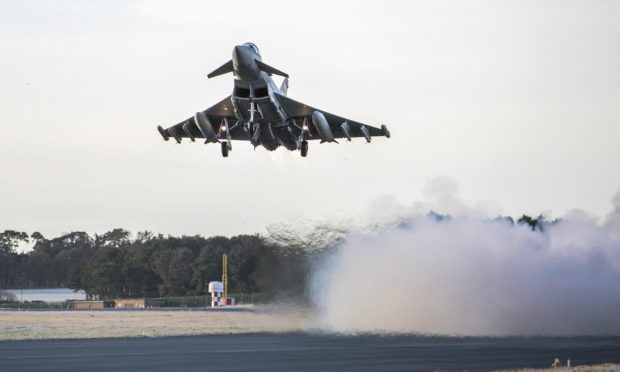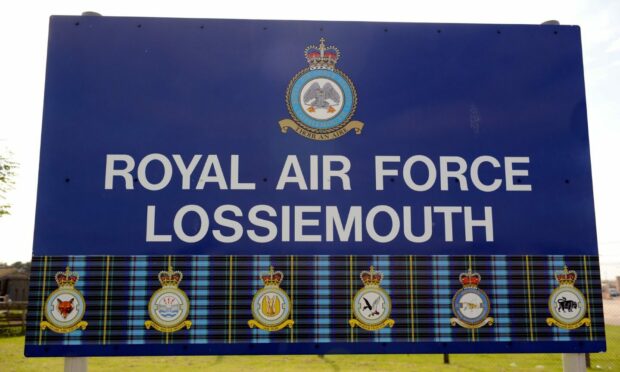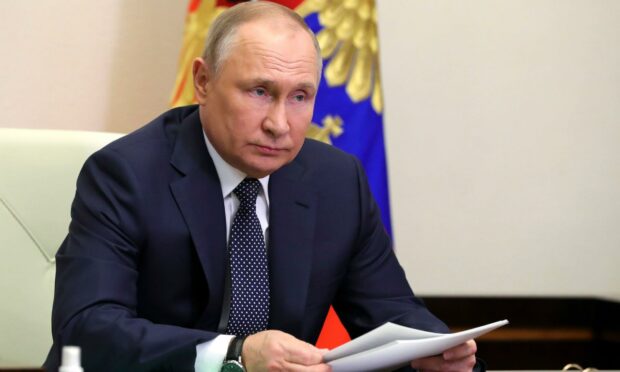RAF Lossiemouth would be a top target for Vladimir Putin’s missiles if Britain became embroiled in conflict with Russia, a military expert has warned.
Justin Bronk, a senior research fellow at the respected Royal United Services Institute (RUSI) think tank, claims there is a “vulnerability” because of a lack of air defences.
He is also concerned about a concentration of military resources at a smaller number of bases.
One solution would be a return to the Cold War tactic of dispersing forces more regularly across a larger number of locations, including the former RAF stations at Kinloss and Leuchars.
The aim would be to show Putin he could not destroy UK air power with attacks on a handful of sites.
Russia has warned of the risk of a direct conflict with NATO as Britain and other western powers continue to supply weapons to help Ukraine defend itself from the Russian invasion.
The escalating tensions, including fears Putin could even detonate a nuclear bomb, have triggered a fresh debate over UK defence policy and investment.
Superbase
RAF Lossiemouth was recently described by a committee of MPs as a “superbase”, having become the the air force’s main station in Scotland since the closure of RAF Leuchars in 2015 and RAF Kinloss in 2012.
The Quick Reaction Alert force at the Moray base is on standby 24 hours a day to intercept threats to the UK’s northern airspace, while RAF Coningsby in Lincolnshire protects the south.
RAF Lossiemouth is home to 2,500 personnel, including those operating its four Typhoon combat jet squadrons, two Poseidon P-8A maritime patrol squadrons, an RAF Regiment squadron, while the new E-7 Wedgetail aircraft will arrive next year.

Bur Mr Bronk, who is editor of RUSI Defence Systems online journal and has advised Westminster’s defence select committee on RAF investment, said the decision to shut bases such as Leuchars and Kinloss had made Lossiemouth a more obvious target.
“There were pressing financial reasons that fed into the decision to close multiple RAF bases over the past couple of decades,” he said.
“However, it is unavoidably true that concentrating all our air assets on a very small number of large main operating bases like RAF Lossiemouth makes them much more inviting targets for Russian long range strike capabilities in the event of a clash between Russia and NATO forces.”
Invest or disperse
The expert said bases such as Lossiemouth should either be equipped with greater defensive weapons systems to discourage an attack, or the RAF should start using the airfields at the likes of Leuchars and Kinloss more often.
“The two practical options for making them less inviting targets would be either to invest in layered missile defence systems at each of the bases to provide a capability to shoot down at least a significant proportion of Russian cruise missiles, and ideally ballistic missiles, fired, or to return to the Cold War tactic of regularly practicing dispersed operations,” he said.
“The latter would involve RAF fast jets and possible other capabilities like the P-8 Maritime Patrol aircraft regularly conducting temporary operations from either deactivated but still maintained runways like RAF Leuchars and Kinloss, or civilian airports, or both, to show that in a crisis, the force would be able to avoid complete destruction by Russian strikes on the main bases alone.
“Dispersal would be cheaper than layered air defences, but it doesn’t solve the vulnerability of the fixed support infrastructure to keep aircraft maintained and flying long term, which is also on those bases.”
Kinloss Barracks, near RAF Lossiemouth, is home to the 39 Engineer Regiment of the Army today, while Leuchars Station in Fife will soon become the new Black Watch base.



Conversation